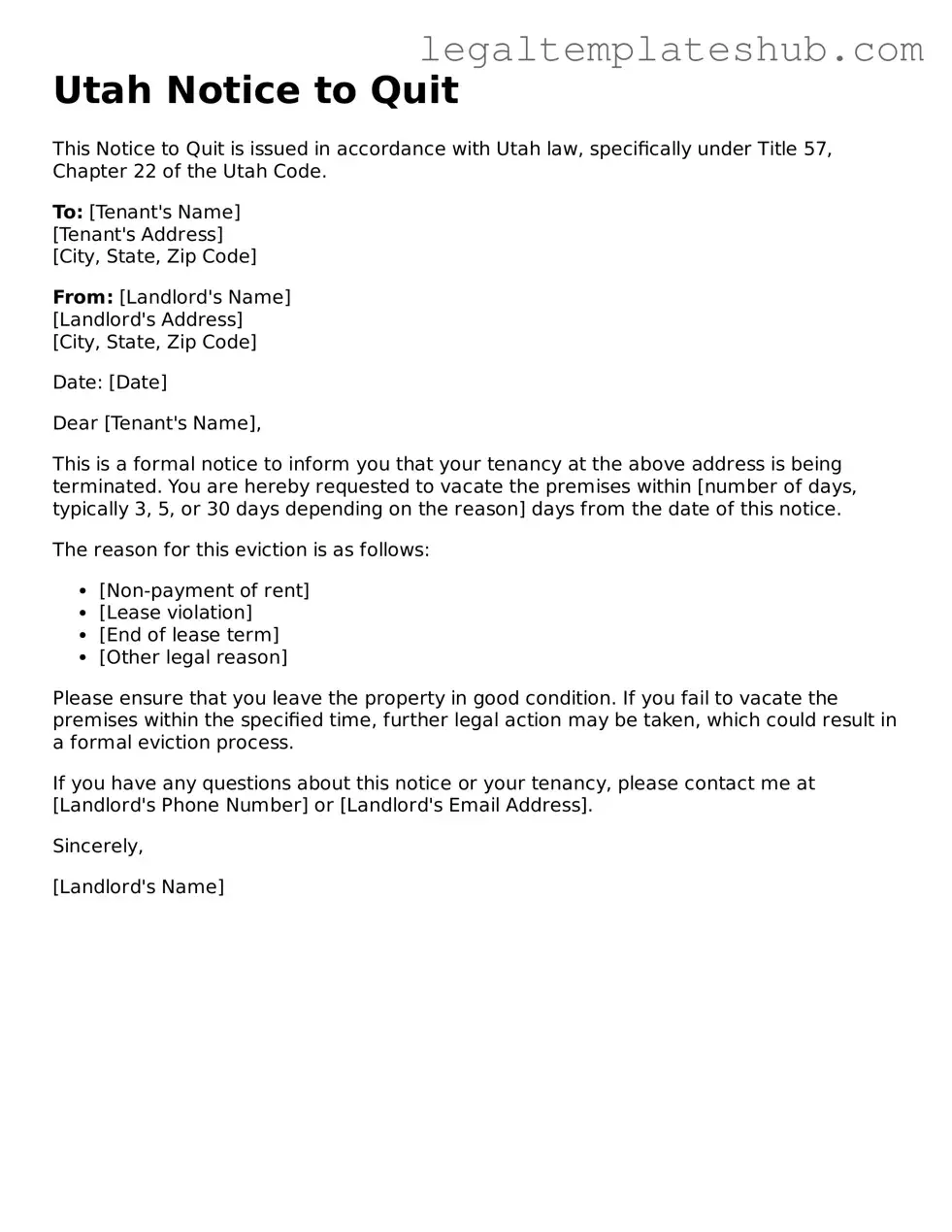Printable Notice to Quit Document for Utah
The Utah Notice to Quit form is a legal document that landlords use to inform tenants that they must vacate the rental property. This notice typically outlines the reasons for eviction and provides a specific timeframe for the tenant to leave. Understanding how to properly fill out and serve this form is essential for both landlords and tenants.
Ready to get started? Fill out the form by clicking the button below.
Access Editor
